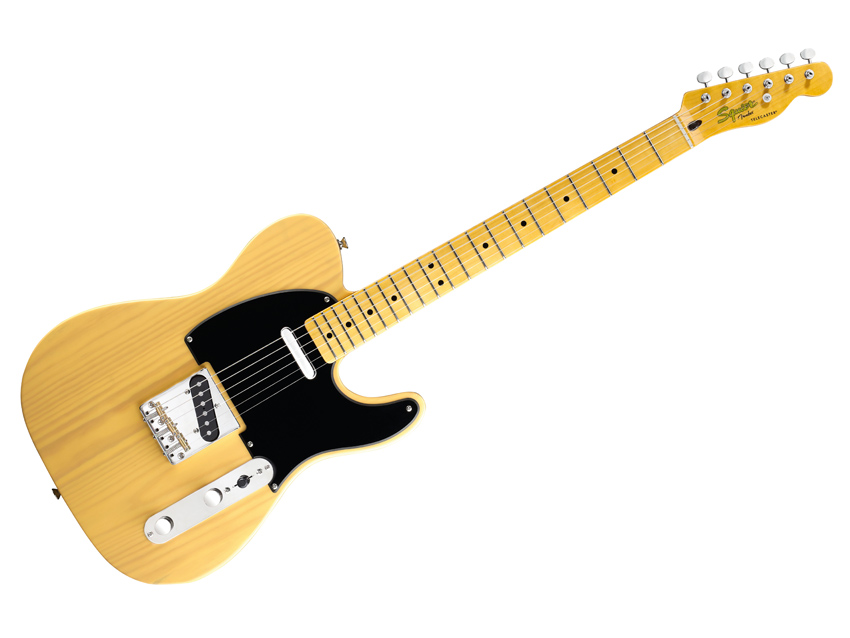MusicRadar Verdict
An affordable classic, tweaked just enough to bring it bang up to date.
Pros
- +
Lively pine body, punchy singlecoil pickups.
Cons
- -
Action is adequate rather than stunning.
MusicRadar's got your back
The Classic Vibe was previously released in Vintage Blonde (aka translucent white) with a pair of Alnico III magnet-loaded singlecoils, and is now available in an authentic Butterscotch Blonde finish. That's not all: this latest edition also boasts a pair of Alnico V-based singlecoil pickups.
Our Classic Vibe has a four-piece pine body, a timber you might associate more with IKEA than Fender.
"The combination of the lively pine body and hotter pickups means this guitar cuts through a mix just as a great Telecaster should."
Actually, Leo Fender's 1949 prototype of the guitar that would eventually be christened the Telecaster was built around a pine body. Also, the first single-pickup Esquire models he released in 1950 had laminated pine bodies in black lacquer.
While Leo switched to Butterscotch-finished solid ash in late 1950 for reasons too complex to go into, the fact that Fender recently unveiled a pine-bodied Custom Shop Telecaster shows how well regarded the timber is as a tone wood.
The Classic Vibe might be cleverly disguised to look like an early 50s Blackguard Telecaster, but its playability is bang up to date. Leo's original guitar had a mega fat neck with a 7.25-inch radius fingerboard, while the Classic Vibe has a slim neck with a 9.5-inch radius 'board fitted with 21 medium jumbo frets.
The flatter 9.5-inch radius equates to a comfortable, if not mindblowing, action throughout the whole fingerboard and easy string bending above the 12th fret.
Want all the hottest music and gear news, reviews, deals, features and more, direct to your inbox? Sign up here.
Sounds
As mentioned, you can choose between the vintage-voiced Alnico III pickups of the Vintage Blonde Classic Vibe, or the new Butterscotch Blonde's ballsier Alnico Vs. The latter offer more output and grunt than the Alnico IIIs, which makes them a smarter choice if you thrive on overdrive.
The combination of the lively pine body and hotter pickups means this guitar cuts through a mix just as a great Telecaster should. It also has that legendary Tele tonal versatility in its DNA, which covers anything from jazz to classic rock.
Remember, the Telecaster is Excalibur to guitarists as disparate as Keith Richards, bluesman Muddy Waters and late great rockabilly legend Danny Gatton. In short, it covers a lot of ground.
There's something a bit bonkers about reviewing a 'new' guitar that was designed more than 60 years ago. Either a) Fender has run out of fresh ideas, or b) the Telecaster is so good it's stood the test of time.
The answer is b). Fender will always struggle to better the Telecaster, because Leo got the design so right in the first place. All the company can hope to do is tweak the design just enough to entice new players to buy one, without buggering it up.
That's exactly what it's done with the Squier Classic Vibe 50s Telecaster. It has timeless looks and modern playability and tone, and if you shop around enough you'll find one for less than £300. Bargain.
